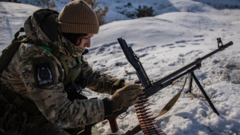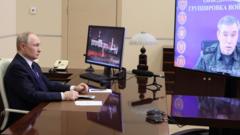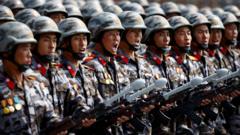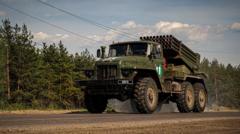With ongoing uncertainty surrounding U.S. military backing, Ukraine's military is increasingly depending on its domestic drone program as a strategic initiative, highlighting their innovation in warfare technology amid turbulent diplomatic relations.
Ukraine Leverages Domestic Drone Innovation Amidst Uncertain U.S. Support

Ukraine Leverages Domestic Drone Innovation Amidst Uncertain U.S. Support
As cease-fire talks stall, Ukrainian forces intensify reliance on locally produced drones to navigate the ongoing conflict.
In the predawn light of eastern Ukraine, soldiers are preparing for a day that will mainly unfold in the confines of a basement hideout, adjoined to the conflict's front line. Instead of direct combat, these troops are engaging in a strategic operation, manipulating drones to gather intelligence and launch precise strikes against Russian targets. As diplomatic negotiations for a cease-fire with President Trump hover in ambiguity, the Ukrainian military is turning its focus to the Line of Drones program—a potentially critical development that could sustain their efforts without the backing of American weapons.
Last week saw a harrowing escalation of violence, including one of the most severe assaults on Kyiv in many months. In the wake of this, President Trump and Ukrainian President Volodymyr Zelensky had a brief meeting that appeared to bear mixed outcomes, as the U.S. administration conveyed unsteady messages regarding future military aid. While Trump hinted at the possibility of increasing arms supply, Secretary of State Marco Rubio warned of a nearing disengagement from the peace negotiations, indicating a pivotal week ahead for both nations.
In the event that talks unravel or military assistance is reduced, the Ukrainian initiative centered on indigenous drones will assume even greater significance. This program emphasizes the production of small, explosive drones developed within the country, allowing personnel to operate them remotely from fortified positions. Such innovation underscores Ukraine’s adaptability and resourcefulness in the face of overwhelming odds, signifying a shifting paradigm in warfare.
“It’s not a one-on-one battle anymore,” noted a squad commander from their basement hub, reflecting the evolving nature of their conflict. As the stakes rise and outcomes remain uncertain, the use of technology could redefine the landscape of warfare and the potential for peace in the region.






















